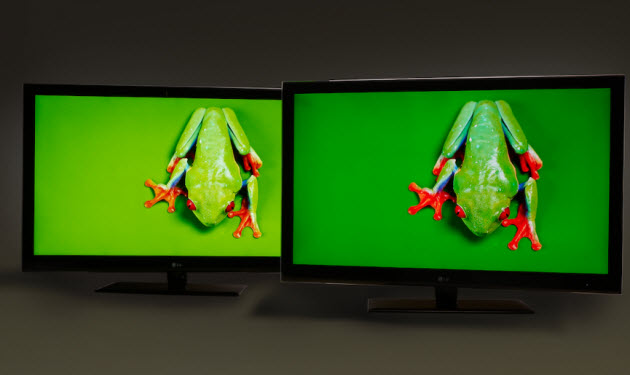 Nanosys, the nanotechnology materials company, is announcing today that it has developed a technology that could make flat-panel displays much brighter and more colorful without increasing their costs, energy consumption or size.
Nanosys, the nanotechnology materials company, is announcing today that it has developed a technology that could make flat-panel displays much brighter and more colorful without increasing their costs, energy consumption or size.
The new liquid crystal display technology uses Quantum Dot Enhancement Film (QDEF), a first-of-its-kind technology that increases the color gamut (or number of colors) in a display by as much as three times without any increase in cost, size or power consumption. The result will be richer and more viscerally vibrant colors such as deeper reds and greens, which are colors the human eye sees more intensely than others. If it succeeds, Nanosys can grab a small share of the $40 billion LCD display market.
The QDEF technology is available to display makers for the first time as an optical film, which can be scaled to fit any size TV, even the largest models. The current generation of displays in smartphones, tablets, laptops and big TVs can only express about 20 percent to 35 percent of the colors the human eye can see. QDEF displays will be able to deliver more than 60 percent of visible colors on a display.
“We believe color will be a significant differentiator for early adopters of quantum dot technology,” said Jason Hartlove, president and chief executive of Nanosys.
He said that QDEF will give display makers a competitive edge by providing consumers with a color quality experience they have only seen in movie theaters and professionally printed photos. Most content has to be dialed down to match the limited capabilities of displays, but that won’t be necessary with QDEF displays.
For display manufacturers, it could make the production of displays — which are manufactured in multibillion dollar factories — less capital-intensive, Nanosys said.
Nanosys makes QDEF technology with its patented quantum dot materials. It disperses them in a polymer matrix and suspends them within an opitcal film. The material makes it easier to create a high-quality white light with a wide range of hues when hit with an energy efficient blue light-emitting diode.
Larger than a water molecule, but smaller than a virus, the tiny phosphors in the Nanosys quantum dots can convert blue light from a standard gallium nitride LED into different wavelengths based upon their size. Larger dots emit longer wavelengths (red), while smaller dots emit shorter wavelengths (green). Blending together a mix of dot colors allows Nanosys to engineer a new spectrum of light. Nanosys basically adds a new layer of material to an LCD screen during manufacturing.
This allows LCD manufacturers to accurately match their LED backlight to their LCD color filters to achieve the best possible color and efficiency performance.
Nanosys first commercialized the quantum dot technology with QuantumRail, a component that improved the quality of small-size LCDs. That technology has been licensed to LG Innotek.
The company has 80 employees and was founded in 2001. Rivals include QD Vision. In terms of other rival technologies, alternatives include organic light-emitting diode (OLED) display technology. Samsung and Nanosys formed a strategic partnership around the new technology last year.
Nanosys investors include Samsung Ventures, Venrock Associates, Arch Venture Partners, Polaris, El Dorado Ventures, Prospect Venture Partners, Harris and Harris, and Lux Capital. The company raised $133 million in an era when nanotechnology got overhyped. But a decade later, some of the promise of nanotech is near fruition.

